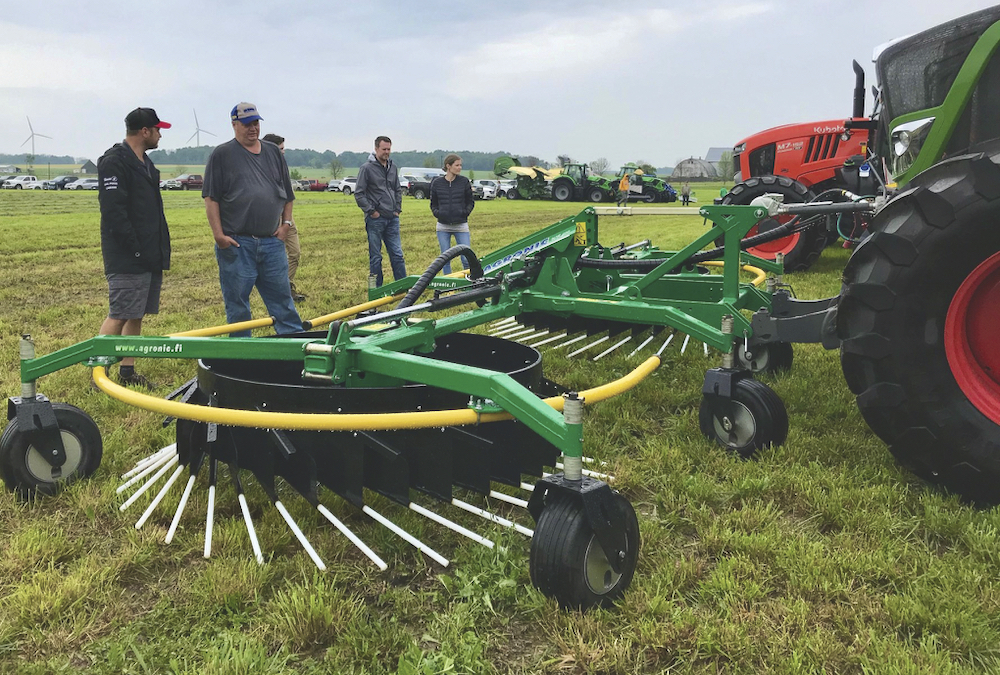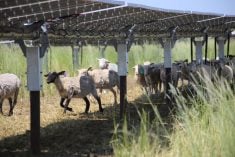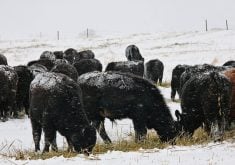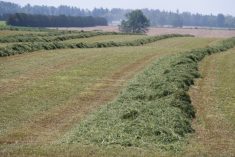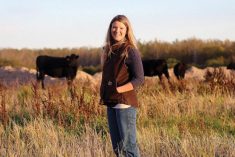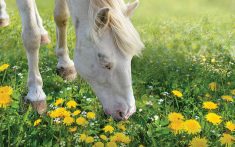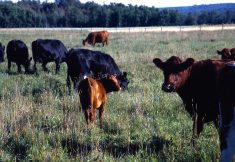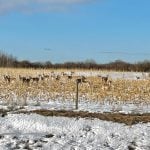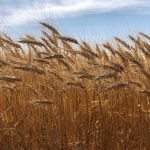Glacier FarmMedia – Large fields and gentle terrain are the norm in forage-producing areas of North America.
Now some European companies aim to have their forage equipment, developed with the typical European farmer in mind, adapted for widespread use on this side of the Atlantic.
Two companies in particular hope to gain traction with North American producers based on potential time savings.
Read Also
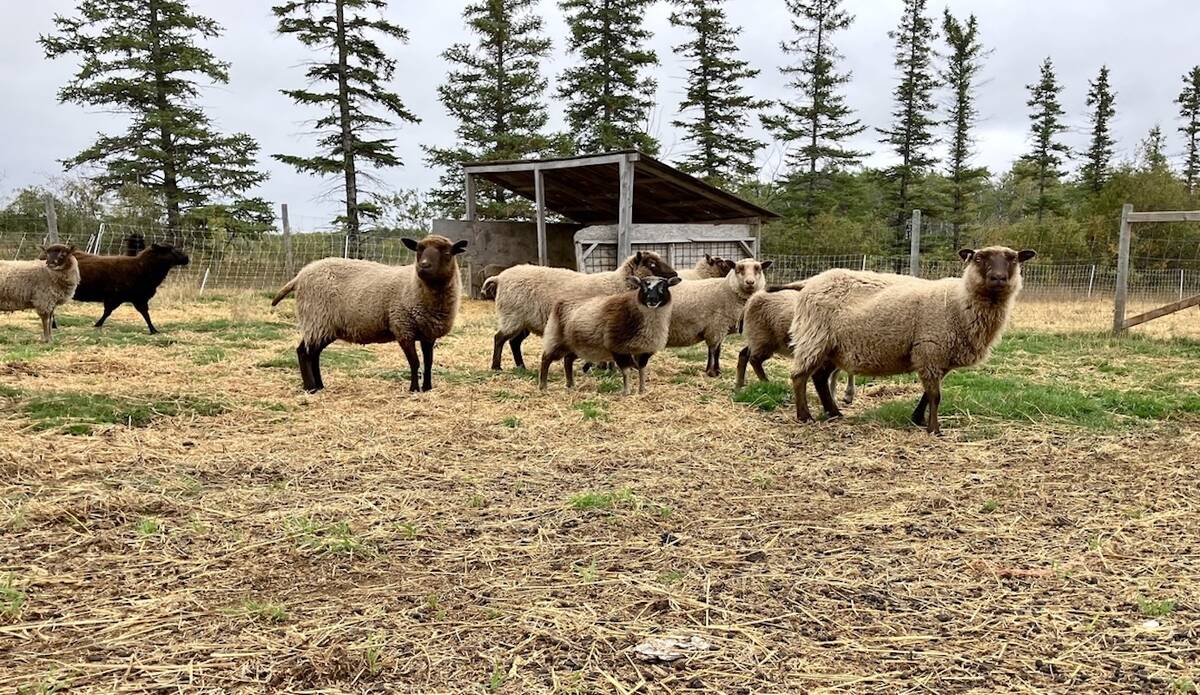
Mosquito-borne virus could be devastating to sheep breeding operations
Cache Valley virus, a mosquito-borne disease that infects small ruminants, could be a devastating hit to small operations.
The short weather window of forage harvest, from cutting to baling or ensiling, makes it worthwhile to consider innovations that could save time, they say.
A number of products from European companies made their way onto Aric Wilson’s corner of the Ontario Forage Expo in July. Wilson represents Leading Edge Equipment based out of Woodstock, Ont.
Among the European offerings was a rake/tedder manufactured by Finland-based Agronic.
Its pitch as a time-saver comes from its ability to rake using a front-mounted unit and follow that in the same pass with a baler or self-loading wagon attached to the rear.
At the expo, the six-metre rake (which also has a seven-metre prototype) was attached by a front-mounted three-point hitch to a tractor that also had a round baler at the rear. The unit was put to the test for onlookers, in which it raked and baled several rows of hay in a demonstration.
“We got up to eight miles per hour and we could have gone faster, but the baler couldn’t take any more [hay] in,” said Wilson.
Other options for attaching the rake are front-mounted as a loader attachment or rear-mounted on the three-point hitch, in which case a baler can’t be operated as well.
“We had one customer who told me he would only need the rear-mounted three-point hitch, but once he tried it on the front, he never went back,” Wilson said. “People really like the convenience and time saving and fuel saving of being able to bale and rake at the same time.”
Wilson has sold 18 Agronic rakes in the past 18 months in Ontario and Quebec, with Connect Equipment serving as the dealer in much of Ontario.
It draws less than 10 gallons per minute from the hydraulic system in either the three-point hitch or loader attachment mode. That allows it to be connected as a third function when mounted as a loader attachment, if that’s available on the tractor.
Hay movement is achieved by nylon rods attached to rotating shafts. Replacement rods are inexpensive, and Wilson said they wear well. He noted one of his earlier customers has so far raked about 8,000 acres and not replaced any rods.
Developed in a hilly region of Finland, the unit is self-floating and adjusts to uneven terrain, making it ideal for many fields around this year’s expo, hosted near Paisley, Ont.
With its genesis in hilly hay country, the Agronic rake shares a bit of its origin story with the Ra rake, from Italian manufacturer Repossi. Not yet established in North America to the same degree as Agronic, Repossi is working with Toronto-based ITACA to secure distribution partners in Canada.
Company owner and president Gabriele Repossi, the fourth generation of the family in an ownership role since the company was founded in 1898, said he conceived the idea for the machine after a visit and a meal with a customer in the hills of central Italy.
“I need to be faster in my field,” Repossi recalled the forage producer telling him. “And I need to provide my customer with the best quality possible. If I’m not able to give them good quality, I will lose this customer.”
Wheel-rake technology, in use for decades and popular because it works best a high speed, has fallen out of favour among some hay producers because it kicks up more dirt than other technologies. Repossi and his customer talked about this drawback.
“The dessert was finished, the wine was finished,” Repossi said with a smile during a video interview organized by ITACA. “So I said, ‘I will try to come up with an idea.’”
An aeronautical engineer by training, Repossi had a three-hour drive to northern Italy, during which he thought of a double-wheeled system with only the exterior rake contacting the ground and driving the machine and the interior rake in contact with the hay.
He pulled off the highway, called the patent office and immediately scheduled a meeting.
“It is so simple that I think it can be disruptive,” Repossi remembers thinking, adding that, in the months since the Ra rake was prototyped and developed, “I’ve had a lot of people say, ‘oh, I’ve never seen something like this before.’”
There are Ra rakes in use in Wisconsin and Quebec but not yet elsewhere in Canada.
– This article was originally published at Farmtario.

